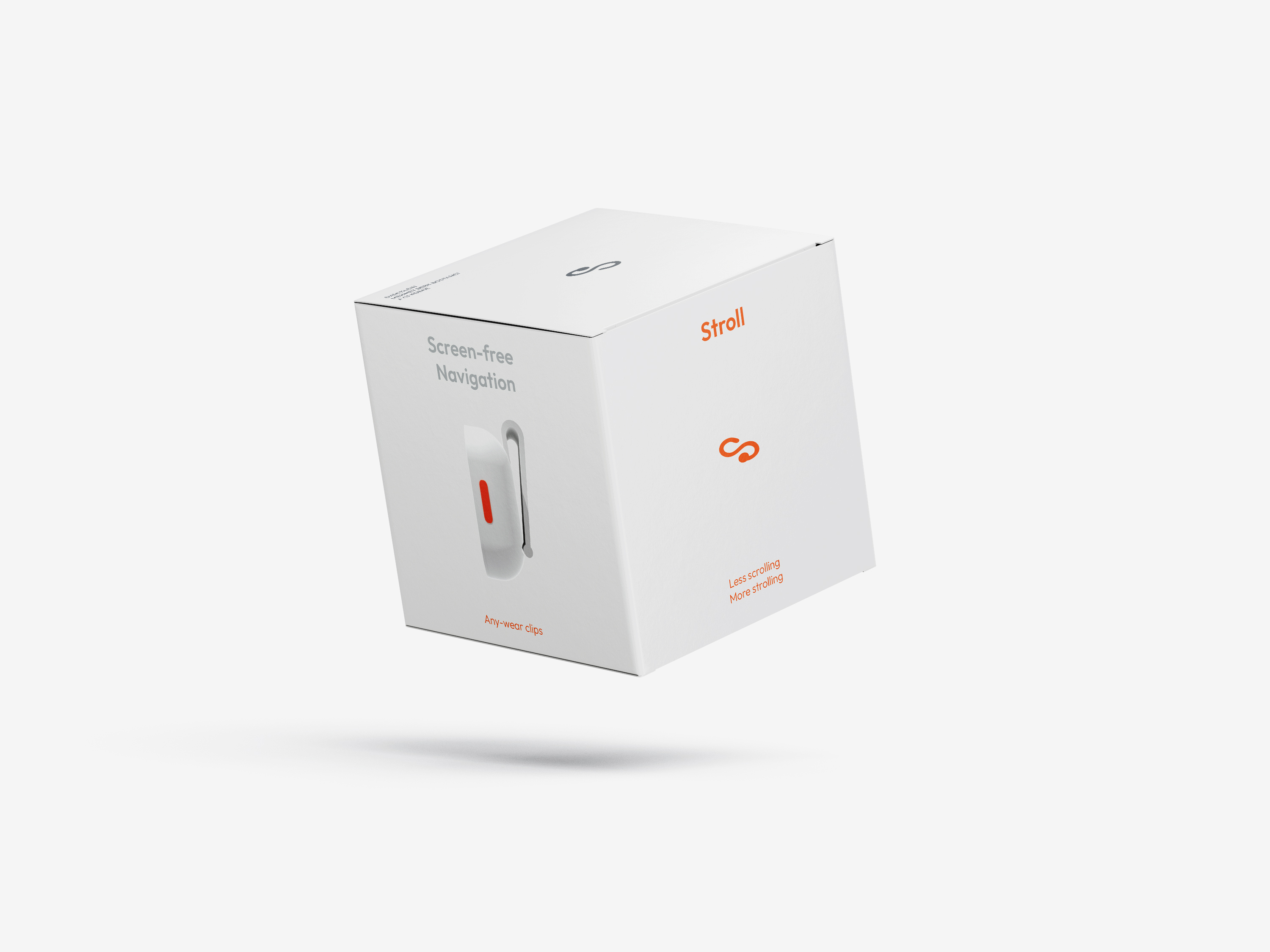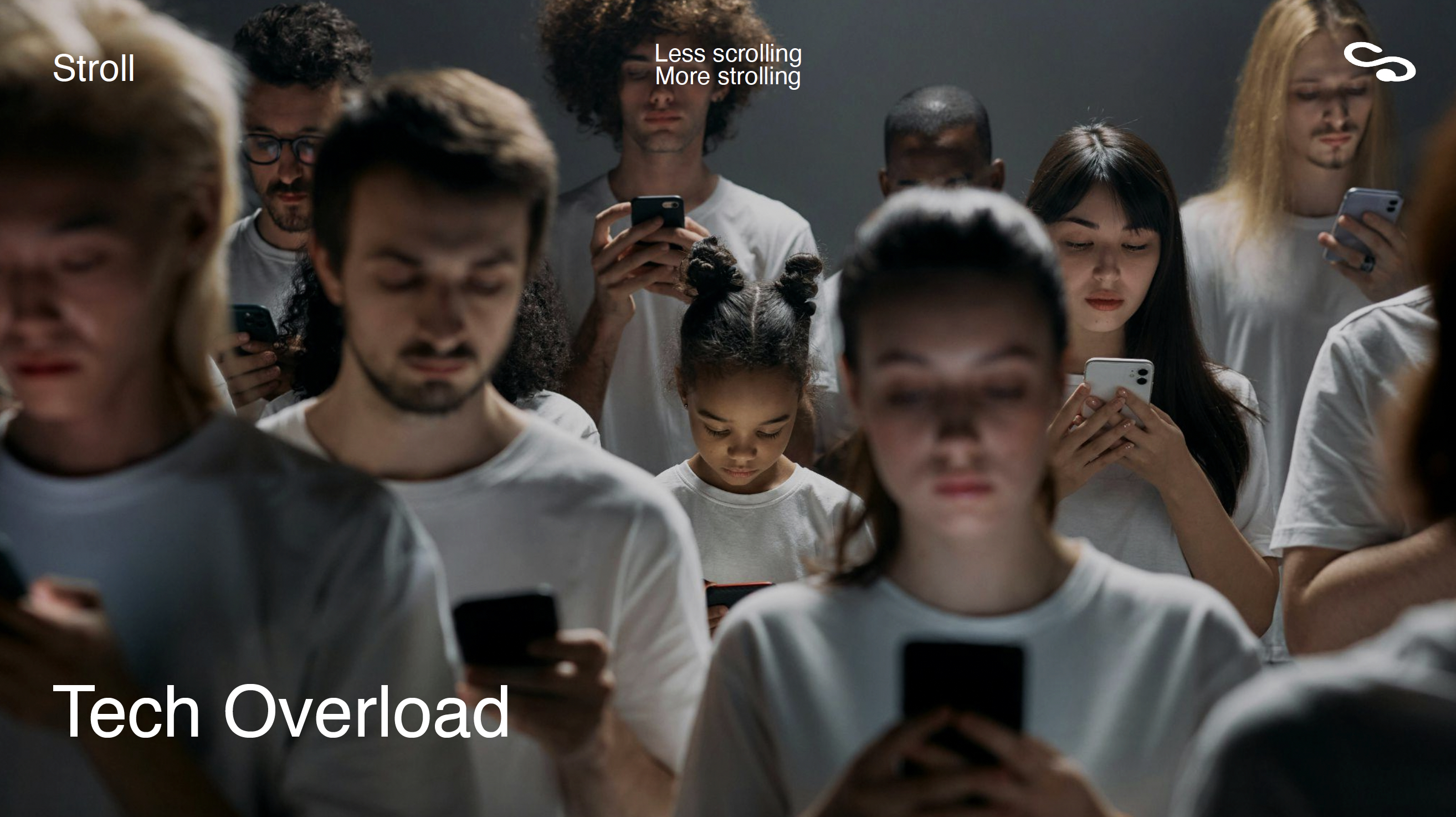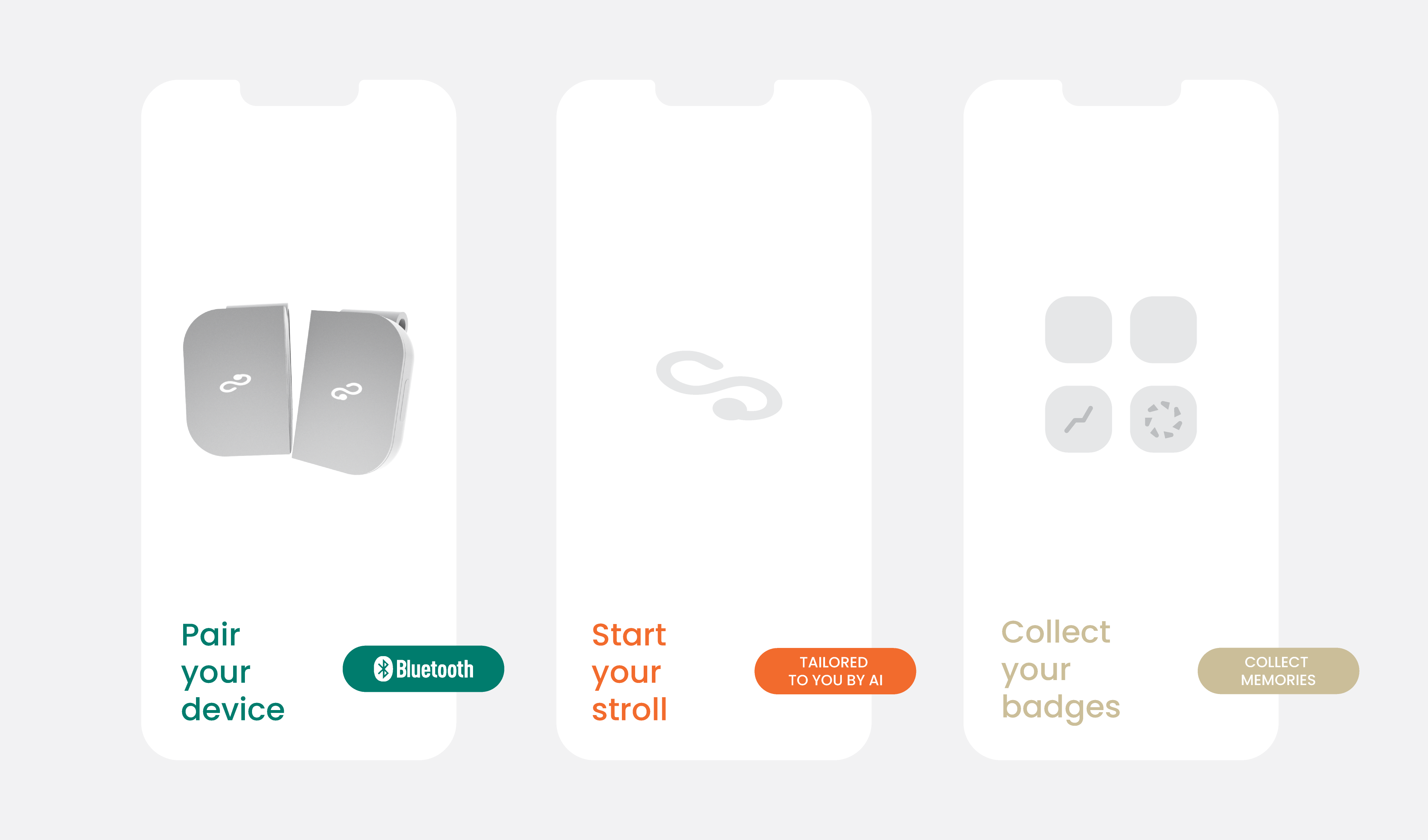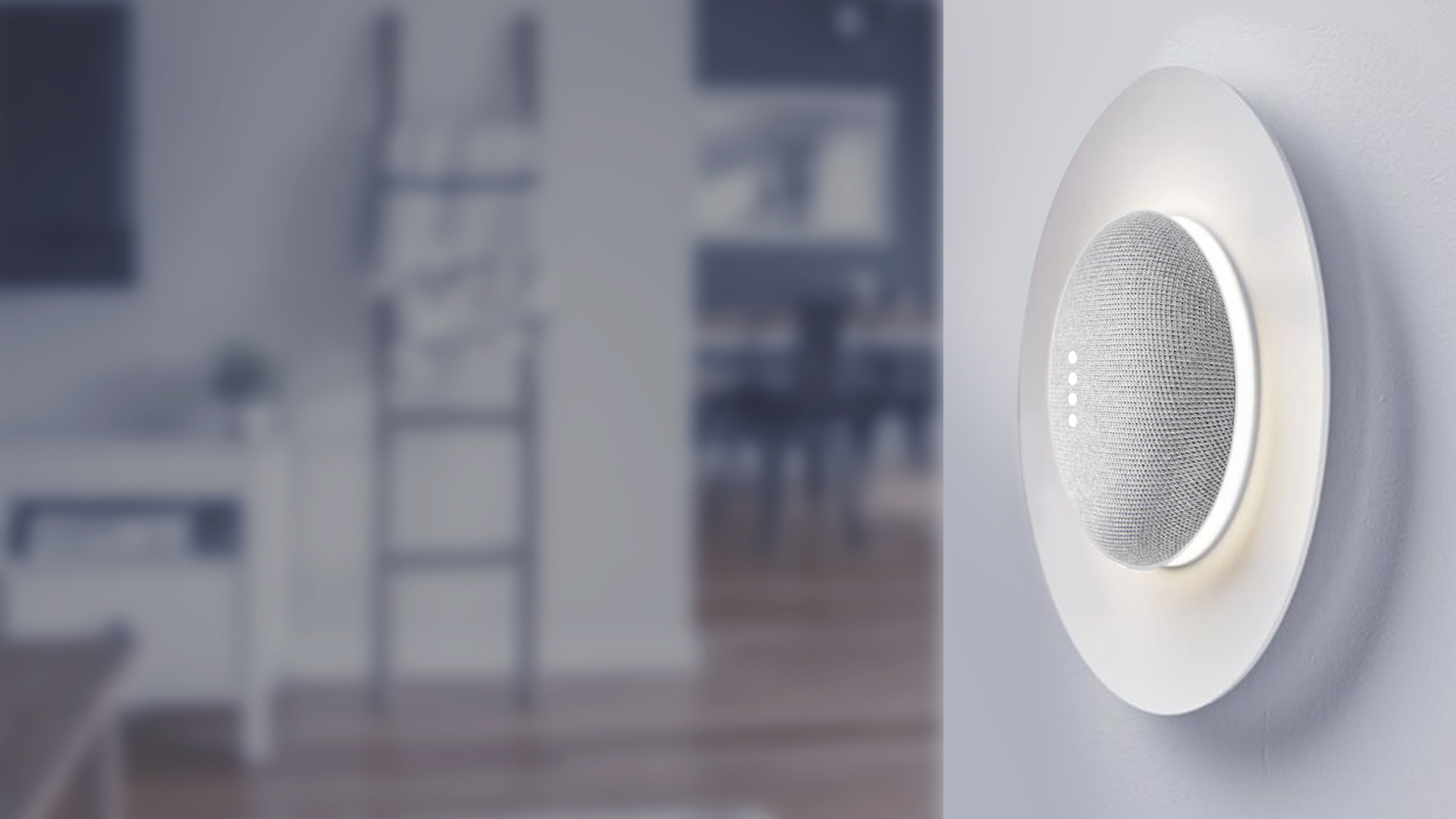Stroll
Walk Freely, Live Fully
-
Client:
Playground Emerging Interactions
- Team:
-
Disciplines:
Concept, UX/UI, Visual Design, Speculative Design, Storytelling, Interaction Design, Product Design, Experience Design, 3D, Prototype testing, Usability testing
-
Schoolyear:
2024-2025
A haptic navigation tool for mindful movement.
Stroll
Stroll is an AI-powered wearable that enables screen-free navigation, encouraging daily walks for mental and physical well-being. In today’s tech-immersed world, people seek self-care and time away from screens. A discovery survey conducted with 76 diverse participants around the world revealed that 92% experienced Technology Overload weekly, with more than half reporting it daily.
Stroll helps users develop mindful walking habits while reducing screen dependency. Instead of visual directions, haptic signals from Stroll’s wearable clips guide users along AI-generated routes tailored to their preferences. The result? Less Scrolling, More Strolling.

Addressing Tech Overload With Calm Technology
Technology Overload drives people to seek solutions that restore balance. While walking improves focus and mental clarity, smartphones often disrupt the experience. Stroll integrates Calm Technology principles, ensuring seamless, non-intrusive interaction. Amber Case (2016) defines Calm Technology as design that communicates information peripherally, requiring minimal user attention while remaining effective when needed. Stroll embodies these principles by using haptic vibrations for navigation, allowing users to stay engaged with their surroundings.
Traditional screen-based navigation demands visual focus, increasing cognitive load and distracting users from their environment. Instead, Stroll’s gentle pulses on the left or right clip indicate turns, leveraging muscle memory for intuitive navigation. By removing reliance on visual and audio cues, Stroll fosters presence, supporting mindful walking as a digital detox method.

Why Walking? Real-World Research
Walking is widely recognized as a restorative practice. Survey respondents cited exercise, fresh air, connection with nature, and mental clarity as their primary motivations. However, technology often detracts from these benefits. According to Pew Research (Madden et al., 2010), one in six cell phone users has physically bumped into someone due to screen distraction.
The team’s research also uncovered a key barrier: safety concerns. While 85% of participants were interested in screen-free navigation, many worried about the inability to make emergency calls. To address this, Stroll integrates safety features inspired by AirTag and InvisaWear, allowing users to send automated location alerts with a simple double-press. This balance of disconnection and security reassures users while promoting a screen-free walking experience.
Generative AI as a Digital Detox Coach
To enable a device such as a smartphone to do everything, we have to take it everywhere and be ready to engage with the device at any given moment. Stroll is a tool with a singular purpose, and therefore temporal—its wearable device is expressly used for walking, and the accompanying app was conceived as the primary platform for engagement with Stroll’s AI coach. The team’s design iterations stripped away non-essential features and adjusted the strategic positioning to embody three values they identified as most important: simple, reliable, and friendly.
The coach provides personalized walking routes and long-term habit formation advice, confining this interaction to the app. Stroll protects the sanctity of the walking experience as a restorative practice of self-care, rather than a commute or exercise to get through or to combine with artificial sensory inputs. But just because an AI coach is not constantly in your face does not mean it cannot be a powerful motivator. Stroll’s power lies in its leveraging of calm technology and the trust that when people return to a more natural manner of walking, the resulting benefits, curated by the app, bring users to appreciate habitual walking and reinforce its positive impact.
AI can bring balance to this dynamic, doing away with constant notifications and tricks designed to woo us to spend more time on screen. The Stroll app curates personal achievements related to habitual walking and screen time reduction, suggesting small ways to improve. With every achievement, from your first screen-free walk to your 20th kilometre, to reduced weekly screen-time, a unique badge is generated in the app. During walks, the app encourages disengaging with your phone.
Whether exploring a new city, taking a break, or commuting, Stroll personalizes every journey to match your pace and preferences.

Product Specs
Haptic Feedback: Dual-motor system with customizable intensity.
Battery Life: 48-hour runtime, 1.5-hour full charge via USB-C.
Materials: Recycled aluminium casing, silicone touchpoints, IP67 water and dust resistance.
Processor: Low-power ARM Cortex M4 for efficient AI routing.
Connectivity: Bluetooth 5.2 LE for fast, stable pairing.
Sensors: Built-in accelerometer and gyroscope for adaptive feedback.
With Stroll, walking becomes more than just movement—it’s a mindful, screen-free experience designed for modern life.



